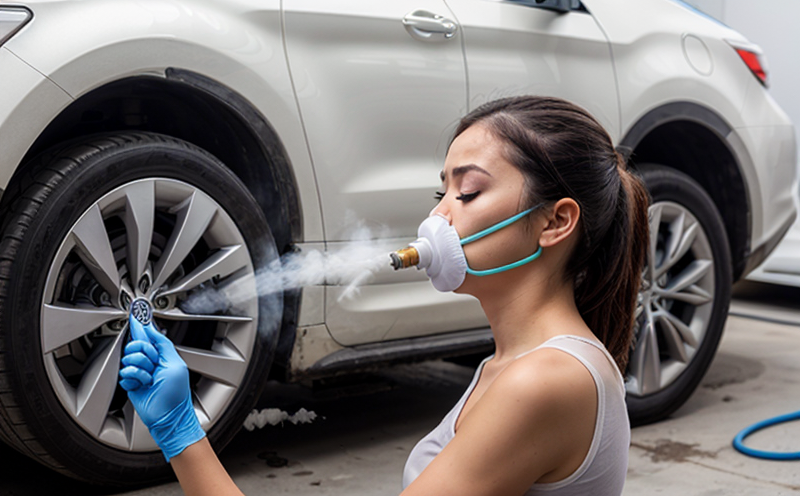IEC 60695 Fire Hazard Emission Testing of Electrical Products
The IEC (International Electrotechnical Commission) standard IEC 60695-11-4 and -11-3, which is part of the broader series for fire hazard testing, is particularly relevant to the electrical products sector. This section focuses on the specific test methods used to assess the flammability properties of materials commonly found in electrical devices.
Fire hazard emission testing ensures that materials do not ignite or produce dangerous emissions when exposed to heat or flame during normal use and under worst-case scenarios. Compliance with this standard is essential for manufacturers to ensure product safety, especially regarding the potential fire hazards associated with materials like insulation, packaging, and components used in electrical products.
The tests are conducted on various specimens that may include plastic casings, rubber seals, wires, insulation, and other insulating materials. The primary goal of IEC 60695 is to determine whether the material can self-ignite or produce harmful smoke and gases under specified conditions. This testing helps in identifying potential fire risks early in the product development lifecycle.
During the testing process, specimens are subjected to a series of heat sources such as a glow wire (GWT) and a cone calorimeter (CCT). The GWT simulates the effect of electrical overheating by applying a constant current through a heated wire, while the CCT measures the heat release rate, smoke production, and toxicity of the material. These tests are critical for ensuring that materials used in electrical products do not contribute to fire hazards.
One key aspect of IEC 60695 testing is the evaluation of the flammability index (FI), which quantifies how easily a material can be ignited and how much smoke and gases it produces when burned. The FI value ranges from -2 to +3, with higher values indicating less hazardous materials.
The testing process involves careful preparation of specimens, ensuring they are representative of the actual products in terms of size, shape, and material composition. Proper sample preparation is crucial for accurate test results that reflect real-world conditions. Once prepared, the samples undergo rigorous testing under controlled laboratory conditions to ensure consistency and reliability.
Compliance with IEC 60695 not only enhances product safety but also supports regulatory compliance. Many countries have adopted this standard as a key requirement in their electrical product regulations. By adhering to these standards, manufacturers can demonstrate that their products meet international safety norms, thereby fostering trust and confidence among consumers.
At our laboratory, we employ state-of-the-art equipment and highly experienced technicians to perform IEC 60695 fire hazard emission testing. Our facilities are equipped with the latest calorimeters, glow wire furnaces, and other essential apparatus required for these tests. We ensure that all procedures comply strictly with international standards to provide accurate and reliable results.
The importance of this testing cannot be overstated, especially in today's fast-paced technological environment where safety is paramount. By conducting thorough fire hazard emission testing early in the product development process, manufacturers can identify potential risks and make necessary adjustments before products reach the market. This proactive approach helps prevent costly recalls and protects both consumers and manufacturers from legal liabilities associated with unsafe electrical products.
Applied Standards
| Standard | Description |
|---|---|
| IEC 60695-11-4 Glow Wire Ignition Test (GWT) | This test evaluates the flammability of materials by subjecting them to a controlled heat source, simulating electrical overheating. |
| IEC 60695-11-3 Cone Calorimeter Test (CCT) | This test measures the rate at which a material releases heat and produces smoke when exposed to fire. It provides valuable data on the combustion behavior of materials. |
Customer Impact and Satisfaction
Compliance with IEC 60695 is crucial for ensuring product safety, which directly impacts customer satisfaction and trust. By conducting thorough fire hazard emission testing, manufacturers can identify potential risks early in the development process, leading to safer products that meet international standards.
Achieving compliance also helps protect customers from hazards such as fires and toxic emissions, which are critical concerns for both consumers and businesses. Our comprehensive testing services not only enhance product safety but also contribute to a healthier and more secure environment.
Our clients benefit from our expertise in IEC 60695 fire hazard emission testing by gaining access to accurate data that supports informed decision-making. This allows them to make necessary adjustments during the development stage, ensuring that their products meet strict safety requirements before reaching the market.
Use Cases and Application Examples
- Polyurethane Insulation: Testing this material ensures it does not ignite easily under normal operating conditions and minimizes smoke and gas emissions when exposed to fire.
- Plastic Enclosures: Evaluating the flammability of plastic enclosures helps manufacturers ensure that their products do not pose a fire risk even in case of overheating.
- Electrical Wiring: Testing wires for flame resistance and smoke production is essential to prevent electrical fires caused by insulation failure.
| Use Case | Description |
|---|---|
| Polyurethane Insulation | Ensures safe use in environments where materials are exposed to heat and flame during normal operation. |
| Plastic Enclosures | Evaluates the material's ability to withstand fire risks, ensuring product safety during accidental overheating events. |
| Electrical Wiring | Guarantees that wiring insulation remains flame-resistant and does not release toxic gases when exposed to fire. |





